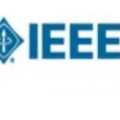We consider the classic question of state tomography: given copies of an unknown quantum state $\rho\in\mathbb{C}^{d\times d}$, output $\widehat{\rho}$ for which $\|\rho - \widehat{\rho}\|_{\mathsf{tr}} \le \varepsilon$. When one is allowed to make coherent measurements entangled across all copies, $\Theta(d^2/\varepsilon^2)$ copies are necessary and sufficient [Haah et al. '17, O'Donnell-Wright '16]. Unfortunately, the protocols achieving this rate incur large quantum memory overheads that preclude implementation on current or near-term devices. On the other hand, the best known protocol using incoherent (single-copy) measurements uses $O(d^3/\varepsilon^2)$ copies [Kueng-Rauhut-Terstiege '17], and multiple papers have posed it as an open question to understand whether or not this rate is tight. In this work, we fully resolve this question, by showing that any protocol using incoherent measurements, even if they are chosen adaptively, requires $\Omega(d^3/\varepsilon^2)$ copies, matching the upper bound of [Kueng-Rauhut-Terstiege '17]. We do so by a new proof technique which directly bounds the "tilt" of the posterior distribution after measurements, which yields a surprisingly short proof of our lower bound, and which we believe may be of independent interest.
翻译:我们考虑的是典型的状态映射问题: 给一个未知量子状态 $\rho\ in\ mathbb{C\d\time d}$, 输出 $Uberhat_rho}$$ 美元, 而对于它来说, $_rho - wrho_ mathsf{ tr\\\\\\\ varepsilon\\\\\ ple\ varepsilon$。 当人们被允许在所有拷贝中进行一致测量时, $Theta( d\\\\\ vareprepsilon2) 的印数是必要和充分的[Haah 和 al '17, O'Donnell-Wright '16] 。 不幸的是, 实现这一比例的协议产生了巨大的量子存储费存储费管理费管理费管理费管理费管理费管理费管理费管理费管理费管理费管理费管理费管理费管理费管理费管理费管理费管理费管理费管理费管理费管理费管理费管理费管理费管理费管理费管理费管理费管理费管理费管理费管理费管理费管理费管理费管理费管理费管理费管理费管理费,, 如此管理费管理费管理费管理费管理费管理费管理费管理费管理费管理费管理费管理费管理费管理费管理费管理费管理费管理费管理费管理费管理费管理费管理费管理费管理费管理费管理费管理费管理费管理费管理费管理费管理费管理费管理费管理费管理费管理费管理费管理费管理费,,, 管理费管理费管理费管理费管理费管理费管理费管理费管理费管理费管理费管理费管理费管理费管理费管理费管理费管理费管理费管理费管理费管理费管理费管理费管理费管理费管理费管理费管理费管理费管理费管理费管理费管理费管理费管理费管理费管理费管理费管理费管理费管理费管理费管理费管理费管理费管理费管理费管理费管理费管理费管理费管理费管理费管理费管理费管理费管理费管理费管理费管理费管理费管理费管理费管理费管理费管理费管理费管理费管理费管理费管理费管理费




